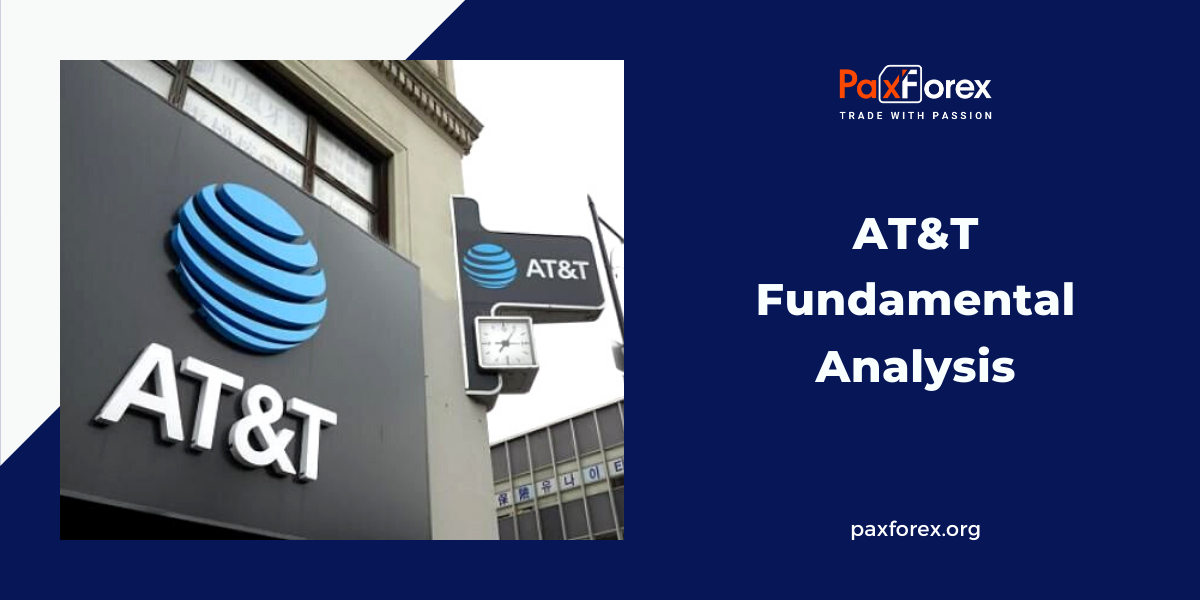
Source: PaxForex Premium Analytics Portal, Fundamental Insight
AT&T currently attracts attention primarily due to its remarkable dividend yield. With a substantial 6.9% yield, the stock has piqued the interest of numerous investors seeking what they perceive as a secure and guaranteed return.
However, a more in-depth examination of both the company and the stock unveils the complete investment landscape for AT&T, highlighting three crucial aspects investors should be aware of before deciding to invest.
- AT&T's Dividend Stability
Given the 6.9% yield, concerns may arise about the sustainability of AT&T's dividend, as a rule of thumb suggests caution when yields exceed 5%. Yet, a thorough analysis of AT&T's financials reveals the telecom giant's robust position to cover its dividend commitments. In the last 12 months, AT&T distributed $8.1 billion in dividends to shareholders, while concurrently generating a net income of $11.3 billion and a free cash flow of $19.8 billion. With dividend payouts lower than its profits by both income and cash flow metrics, AT&T appears well-positioned to sustain its dividends, provided the business maintains its current trajectory.
- AT&T's Limited Revenue Growth and Financial Challenges
AT&T doesn't fit the mold of a growth stock, evidenced by its modest quarter-over-quarter growth of 1.5% in the past four quarters. This raises concerns among investors, particularly regarding the sustainability of AT&T's dividend in the absence of substantial revenue growth. The company must carefully manage its operating expenses to prevent a decline in margins, as an imbalance between rising expenses and stagnant revenue could put pressure on the dividend.
While AT&T has demonstrated prudence in controlling operating expenses, a more significant challenge looms in the form of its substantial debt. With an income statement burdened by a massive interest expense due to nearly $140 billion in long-term debt, AT&T faces the risk of dividend cuts, especially if the company resorts to issuing additional debt without corresponding revenue growth.
AT&T may manage to maintain its dividend without substantial revenue growth, but the absence of growth creates a precarious situation for investors.
- AT&T's Lackluster Performance in the Stock Market
Another critical aspect to consider before investing in AT&T is its historical performance relative to the broader market. Total return, encompassing stock price movement, and dividends, serves as a vital metric for dividend-focused investors.
Unfortunately, AT&T has failed to deliver significant benefits to investors compared to the S&P 500. The 10-year return, in particular, appears unimpressive, especially when contrasted with the S&P 500's remarkable 204% return over the same period.
In summary, AT&T's lackluster long-term performance and stagnant growth deter most savvy investors. While the stock might appeal to those solely focused on dividends (with a tolerance for potential capital losses), there are more reliable avenues, such as investing in the S&P 500, to generate near-guaranteed income.
As long as the price is above 15.00, follow the recommendations below:
- Time frame: D1
- Recommendation: long position
- Entry point: 16.63
- Take Profit 1: 18.00
- Take Profit 2: 19.00
Alternative scenario:
If the level of 15.00 is broken-down, follow the recommendations below:
- Time frame: D1
- Recommendation: short position
- Entry point: 15.00
- Take Profit 1: 14.00
- Take Profit 2: 13.00













